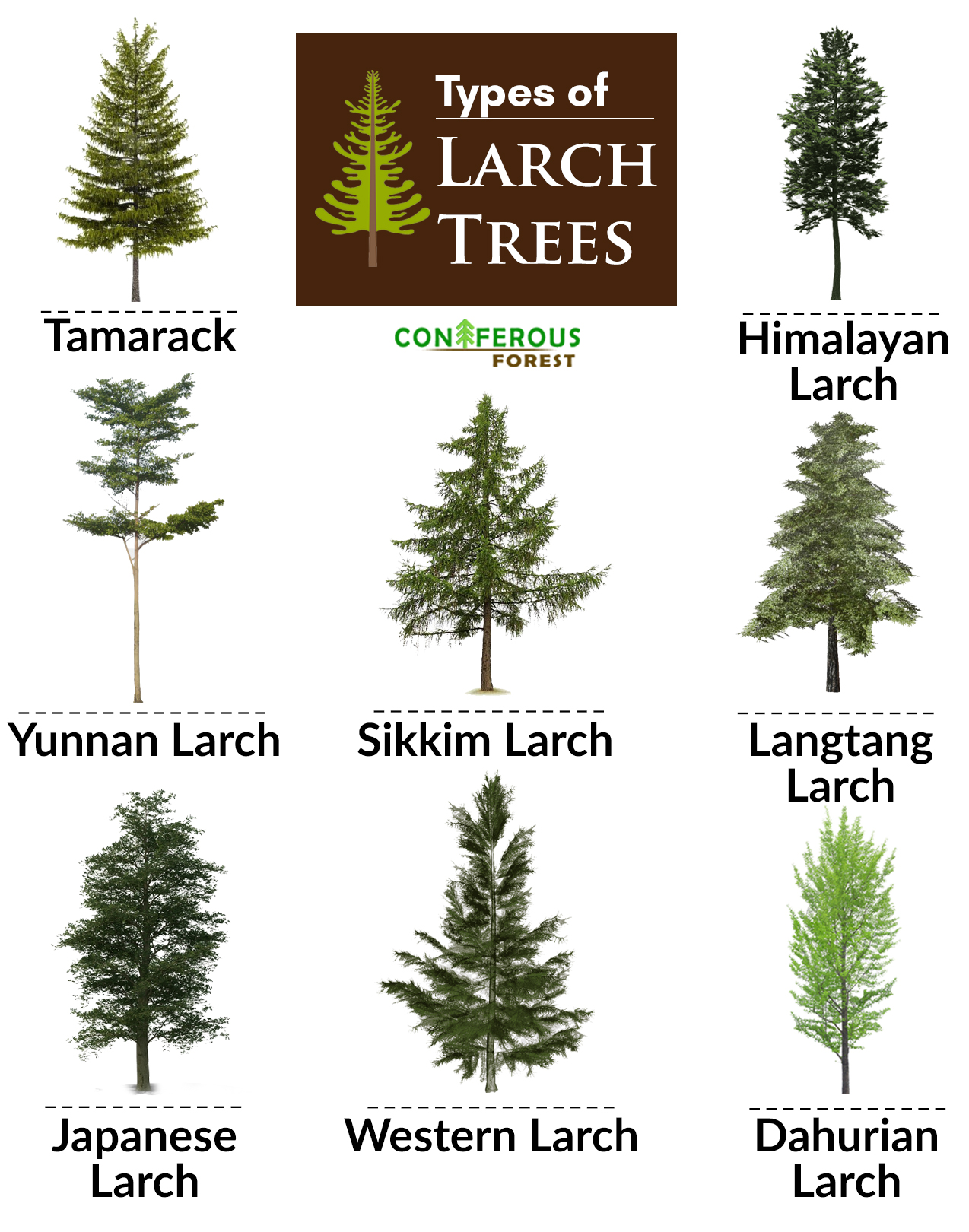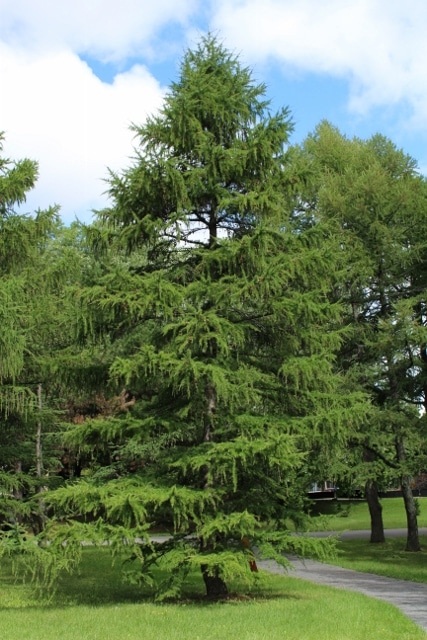Larch
Larch Trees: Resilient Evergreens with Unique Features and Ecological Importance
Picture a tree that defies the harshest cold climates, thriving above permafrost and towering through mountain ranges. The Larch Tree is a living testament to resilience, with its striking yellow autumn foliage and the rare characteristic of shedding its needles each winter, setting it apart from other evergreens.
The Larch Tree (Larix spp.) is one of the most fascinating evergreens due to its deciduous nature. Unlike other conifers that retain their needles year-round, Larchs shed their needles in autumn, displaying vibrant yellow hues before they fall. Found in cold climates across the Northern Hemisphere, from the mountains of North America to the Siberian tundra, the Larch is a survivor. This tree thrives in nutrient-poor soils and harsh environments, its wood valued for its durability and resistance to the elements. From its towering height to its ecological contributions, the Larch is a vital species that continues to endure, despite the challenges it faces.
Larch is any of the coniferous trees belonging to the genus Larix categorized under the family Pinaceae. Although these are classified as conifers, larches turn yellow and lose their needles in the autumn or fall just like deciduous trees. These are medium-sized trees with the typical pyramidal canopy of conifers. They are found in places with cold climates and plenty of moisture.
Scientific Classification | |
| Kingdom | Plantae |
| Clade | Tracheophytes |
| Division | Pinophyta |
| Class | Pinopsida |
| Order | Pinales |
| Family | Pinaceae |
| Subfamily | Laricoideae |
| Genus | Larix |
List of Different Types of Larch Trees
The Larix genus is primarily divided into two groups, including the North American species and Eurasian species, out of which the latter is subdivided into the northern short-bracted and southern long-bracted species. According to the Royal Botanic Gardens, Kew and Missouri Botanical Garden, there are ten different species of larch.
North American Species
- Eastern Larch or Tamarack (Larix laricina)
- Subalpine Larch (Larix lyallii)
- Western Larch (Larix occidentalis)
Eurasian Species
Northern Short-Bracted Species
- European Larch (Larix decidua)
- Siberian Larch (Larix sibirica)
- Dahurian Larch (Larix gmelinii)
- Japanese Larch (Larix kaempferi)
Southern Long-Bracted Species
- Chinese Larch (Larix potaninii)
- Master’s Larch (Larix mastersiana)
- Himalayan Larch (Larix griffithii)
Aside from the abovementioned species, several hybrids exist, including Larix x czekanowskii, Larix x marschlinsii, Larix x maritima, Larix x stenophylla, and Larix x lubarskii.
Some cultivars of European larch, such as the dwarf spreading ‘Corley’ and the weeping ‘Pendula’, along with the cultivated varieties of eastern larch, including the globe-shaped ‘Lanark’ and the much smaller ‘Newport Beauty’ make lovely ornamental plants.
Quick Information | |
| Tree Type | Coniferous, deciduous |
| Identification | Height: 65-150 ft Leaves: Light green, needle-like, slender, 2-5 cm long Trunk Diameter: 3-5 ft Bark: Reddish-brown, gray, finely cracked, wrinkled Female Cones: Small, erect, 1-9 cm long, purple or green, becoming brown when they ripen Seeds: Winged Branches: Mid-level branches are almost horizontal, lower-level branches may droop Crown: Conical, with sparse branches Male cones: Orange-yellowish, fall after pollination |
| Distribution | North America, northern Siberia, Europe, mountainous regions of Asia including Japan and China |
| Habitat | Mountainous regions of temperate zones, northernmost boreal zones |
| USDA Hardiness Zone | 2b-9b |
| Growth Rate | Moderate to fast depending on the species, 24-36 inches annually |
| Lifespan | 600-800 years on average, but some can live for up to 1000 years |
| Growing Conditions | Sunlight: Six hours of full sun or partial shade Soil: Tolerates acidic, basic, and neutral soils rich in organic matter Water: Needs regular watering to keep the soil moist |
| Drought Tolerance | Low to moderate, varies across species |
| Diseases & Pests | Fungal canker, wood, root, and crown rots, fungal rusts; larch casebearer, woolly larch adelgid, spittlebugs |
| Reproductive System | Monoecious |
| Propagation | From stem cuttings |
| Wildlife Value | Red squirrels, lesser redpoll, and the siskin eat the seeds, black grouse eats the immature cones, caterpillars feed on the cone scales and foliage |
| Uses | Waterproof, durable wood for interior paneling and exterior cladding of houses and buildings, knot-free timber for building small boats and yachts |
| IUCN Conservation Status | Species like European larch and western larch are listed as Least Concern |
Interesting Facts
- Dahurian larches are incredibly cold hardy and can grow in the topsoil above permafrost.
- The ‘Pendula’ cultivars are not planted near busy streets in the city because they are affected by pollution.
- Alpine larches in Manning Provincial Park, British Columbia, are among the oldest living larches. Some of those trees are believed to have lived for more than 1,900 years.
Conclusion
The Larch Tree is more than just a resilient evergreen; it’s a key player in maintaining the health of high-altitude and cold-climate ecosystems. Its ability to withstand extreme conditions makes it a crucial species for stabilizing soils and promoting biodiversity in harsh environments. The Larch provides habitat for various wildlife and offers valuable resources, from durable timber used in construction to its fragrant wood used in boat-building. As with many species, the Larch faces pressures from environmental changes and pests, highlighting the importance of conservation efforts to preserve this remarkable tree for future generations.
References




